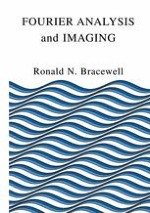2003 | OriginalPaper | Buchkapitel
Two-Dimensional Noise Images
verfasst von : Ronald Bracewell
Erschienen in: Fourier Analysis and Imaging
Verlag: Springer US
Enthalten in: Professional Book Archive
Aktivieren Sie unsere intelligente Suche, um passende Fachinhalte oder Patente zu finden.
Wählen Sie Textabschnitte aus um mit Künstlicher Intelligenz passenden Patente zu finden. powered by
Markieren Sie Textabschnitte, um KI-gestützt weitere passende Inhalte zu finden. powered by
Noise in an image can be defined as the unwanted part of that image. The noise may be random in some way, as is the pepper-and-salt appearance on a television screen when the station goes off the air, or it may be systematic, as with the ghost seen when an echo of the wanted signal arrives with a time delay after reflection from a hill. When the television image responds independently to sparks in a faulty thermostat in the nearby refrigerator or to a faulty ignition system on a passing motorcycle, the noise exhibits both random and systematic features. In other cases, the wanted signal may be random; thermal microwave or infrared radiation used for mapping the ground is of this nature. As a result, one person’s noise may be another person’s signal and vice versa. Very often it does not matter much what the character of the noise is, only its magnitude is needed, an attitude that is reflected in the term signal-to-noise ratio. As the examples show, the noise in an image need not be independent of, but can be closely connected with, the wanted signal itself. In the latter case if the signal is removed, the noise will change. When the noise is independent, it may be studied on its own in the absence of any wanted signal.
